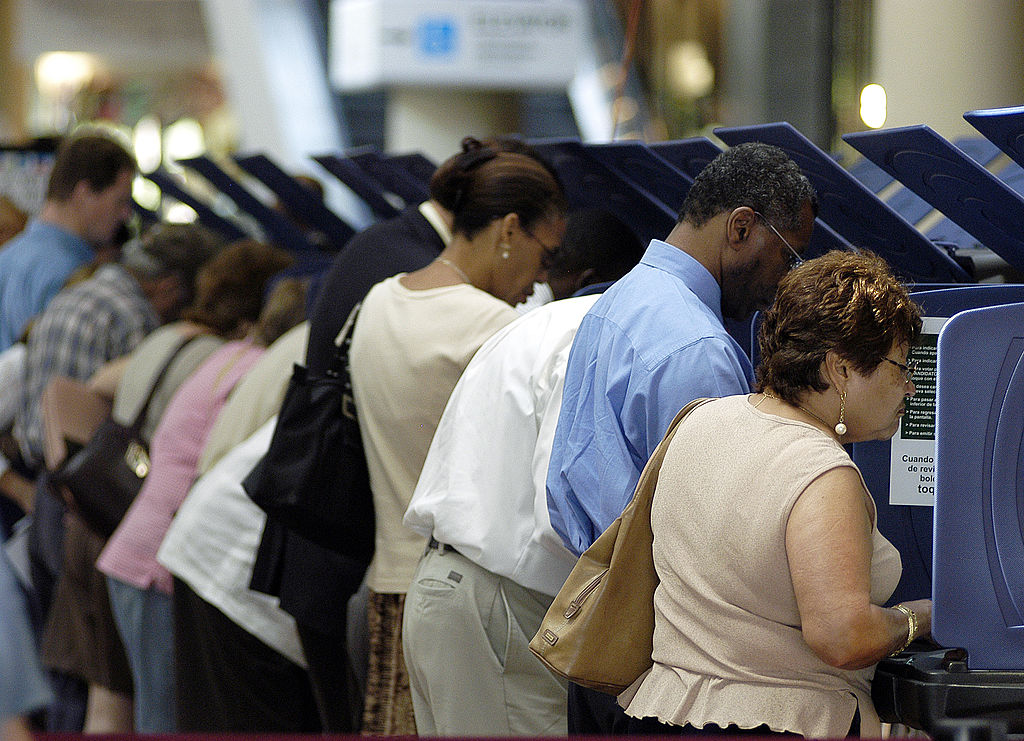Biden’s normalcy problem
The problem with promising a return to normalcy is that you can only do it once. That’s one of the lessons from the Virginia governor’s race, where Terry McAuliffe’s emphasis on the dangers of Donald Trump fell flat.
In other words, what worked in 2020 hasn’t worked in 2021 and looks unlikely to work in 2022.
That’s all true, but it’s also worth remembering that the strategy pursued by McAuliffe didn’t even work especially well last year. Yes, Joe Biden capitalized on dislike of the former president. Trump fatigue delivered Democrats the White House. But the strategy didn’t work further down the ballot. Biden outperformed other Democratic candidates on the ballot. The party lost seats in the House. They did clinch control of the Senate, but to call January’s Georgia run-offs a Republican own goal would be an understatement.
And so, for all the twists and turns of recent months, including the dramatic collapse in the president’s popularity, there’s more continuity than you might think between the 2020 and 2021 results.
“Nobody elected him to be FDR, they elected him to be normal and stop the chaos,” said Virginia congresswoman Abigail Spanberger, a moderate now staring down the barrel of midterm defeat in her competitive district.
That brings us to the second problem with promising a return to normalcy: what happens if things don’t feel that normal?
The political mood may have calmed somewhat over the last twelve months, but Biden’s normalcy promise was understood as a pledge of competence, a decisive end to the pandemic and a return to economic business as usual. Measured by these criteria, Biden comes up short.
Masks and coronavirus protocols still abound. Dr Anthony Fauci is still on television working anxious viewers up about their Christmas plans. Inflation and slowing growth are hampering the recovery. From a catastrophic withdrawal from Afghanistan to botched Hill negotiations, the White House can’t seem to get anything right.
And so normalcy looks a lot like a broken promise. But the Democrats’ headache gets worse. In the long run, “normalcy” is not a governing philosophy. Spanberger is right: Biden wasn’t elected to be FDR. But that leaves the question of what future Democrats will be elected to do.
Right now, they have little else to go on beyond overhyped claims about the threat represented by the other side. Strip that away and you have an unhappy coalition, deeply divided over economics and held together by a progressive identity politics that Tuesday made clear is a turn off to voters.
Democrats may be recalibrating their sense of what the purpose of the Biden presidency now is. But it’s increasingly clear that their problems are even more serious than that.
The Latino realignment continues
Democratic Party operatives will find little solace in the demographic trends beneath the headline results.
These underlying shifts are why Sean Trende of RealClearPolitics argues that the party’s narrow win in New Jersey is more ominous than the Virginia result.
It looks like the rightward shift among Latinos is continuing. “From 2017,” writes Trende, “the biggest Republican gains came in Passaic City, Prospect Park, Woodland Park and Little Falls Township. These are among the most heavily Hispanic areas of the county, suggesting that Trump’s 2020 gains may last without him on the ballot, and even with a relatively obscure Republican running.”
In Virginia, the Latino trend is less clear. One exit poll found that Glenn Youngkin triumphed among Latinos by 12 points. Another gave McAuliffe the win by 34 points.
More sophisticated analysis of these results will follow. But for now, as Trende writes of voting patterns in the Garden State: “continued losses among blue-collar whites, combined with defections among Hispanic voters, is a potentially catastrophic outcome for Democrats in 2022. These are the results that should keep Democratic strategists awake at night.”
No Ciatt
The prize for headline of the week goes to the Trentonian. Responding to the narrow win for Phil Murphy in the New Jersey governor’s race over Republican Jack Ciattarelli, the paper went with: “Holy Ciatt that was close.”
Dun-dun Durr
Perhaps the wildest of all the results on Tuesday night was in southern New Jersey.
The votes are still being counted, but New Jersey Senate President Stephen Sweeney, the man who runs the state’s Democratic Party machine, is on the brink of defeat to political outsider Ed Durr.
What makes this David-and-Goliath battle so remarkable is that Durr spent just $153 on his campaign, half of which went to coffees at Dunkin Donuts. How much did it cost Sweeney to win the seat last time? As Cockburn reports, he and his allies spent $13.8 million in 2017. Now he could be about to be replaced by a truck driver whose campaign amounted to no more than a Facebook account and a helping hand from a few friends and family members.
What you should be reading today
Aram Bakshian: An appreciation of the Trump hotel
Kevin Mooney: New Jersey’s nothingburger governor underperforms
Podcast: Voters say no to the revolution of 2020
Matt Taibbi, Substack: The red-pilling of Loudoun county
Ross Douthat, New York Times: Republicans schooled the left in Virginia
Poll watch
President Biden Job Approval
Approve: 43.0 percent
Disapprove: 51.1 percent
Net approval: -8.1 (RCP Average)
Is the country heading in the right or wrong direction?
Right direction: 30 percent
Wrong track: 59 percent (YouGov/Economist)


















